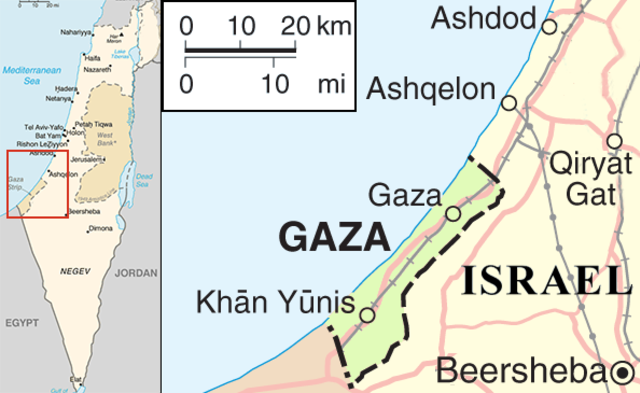What is the Gaza Strip?

On October 7, the military wing of Hamas conducted an air and ground attack against Israel, taking hostages back into the Gaza Strip. The Israeli government responded with a complete siege on Gaza, stopping deliveries of food, water, electricity and other supplies, and carried out retaliatory air strikes.
Breaking Updates
Over 1,300 people in Israel and 1,799 people in Gaza have been killed.
Between 100 and 150 Israelis and foreign nationals have been taken into Gaza as hostages.
Human Rights Watch verified videos showing the use of artillery-fired white phosphorus by Israel in Gaza City and two rural locations at the Israel-Lebanon border.
White phosphorus is “unlawfully indiscriminate” when used in crowded civilian areas, where it can set fires to homes and burn civilians to the bone.
Internet connectivity in Gaza has been below 20% since Tuesday because of the damage inflicted by Israeli air strikes, according to network analyst Doug Madory.
The Israeli Defense Forces ordered 1 million Gazans, roughly half the population, to evacuate northern Gaza and go to the southern part of the territory.
The UN urged Israel to reverse the order and U.S. Secretary of State Blinken says he, “rejects the forced displacement” of Palestinians.
Geography & Demographics
The Gaza Strip is a 25-mile long, roughly 5-mile-wide strip of land that borders Egypt, the Mediterranean Sea, and Israel.
The population of Gaza is roughly 2.2 million and is one of the most densely populated areas in the world.
65% of Gaza’s population is under the age of 24 and almost 40% is under the age of 15.
60% of Gaza’s population are refugees and nearly 75% are supported by UNRWA.
More than half of the Gaza population lives in poverty 45% of Gazans are unemployed.
Humanitarian Situation
After Hamas gained control of the Gaza Strip in 2007, Israel announced an air, land, and sea blockade that limits the movement of people and goods through Israeli-controlled crossings.
Israel asserts that the blockade aims to prevent Hamas from gathering weapons, yet the group has been able to smuggle weapons in and out of the country through a network of tunnels.
Many human rights organizations and politicians refer to Gaza as the world’s largest open-air prison.
80% of Palestinians in Gaza depend on international assistance to survive due to the blockade.
In August 2023, the World Food Programme reported that 63% of Gazans were food insecure, up from 44% in 2012.
UNICEF reported that 96% of water from Gaza’s sole aquifer is unfit for human consumption.
The ongoing conflict has severe impacts on children’s mental health. One study showed as many as 42% of students needed psychosocial intervention due to trauma reactions.
For Palestinians, leaving the Occupied Territories requires an Israeli-issued travel permit.
According to Israeli human rights organization B’Tselem, Israel “refuses” to issue these permits to Gazans, with rare exceptions.
Before the Hamas takeover of Gaza in 2007, nearly 120,000 Gazans worked in Israel.
Governance
In mid-2021, 7,000 Gazans had work permits and in October 2022, Israel raised the quota to 17,000.
After World War II, the UN proposed a partition between a Palestinian Arab and Jewish state.
After the 1948 Arab-Israeli War, Egypt controlled the Gaza Strip.
After the 1967 War, Israel occupied Gaza and the West Bank and annexed East Jerusalem.
In 2005, Israel removed all Israeli settlers from the 17 settlements in Gaza.
Hamas won the 2006 legislative elections in Gaza, beating the Fatah party, which runs the Palestinian Authority (PA) in the West Bank.
Hamas has not held elections in Gaza since 2006. In 2007, Hamas defeated Fatah in a military conflict in Gaza.
The PA was expelled from the Gaza Strip. According to Freedom House, the Gaza Strip is a de facto one-party state under Hamas.
Article Courtesy, Middle East Policy Council


